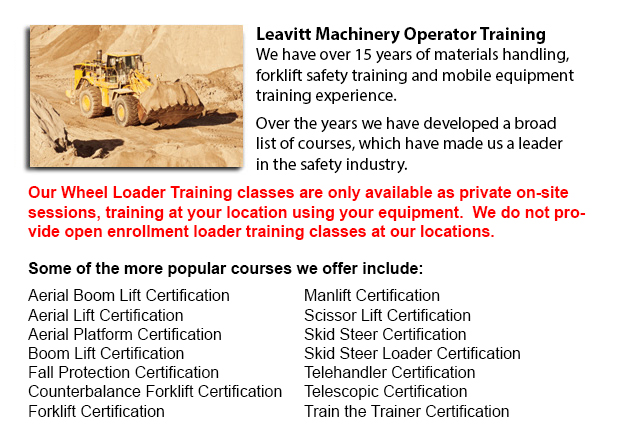
Lift trucks are obtainable in a variety of various units which have varying load capacities. Most standard lift trucks used in warehouse environment have load capacities of 1-5 tons. Bigger scale models are utilized for heavier loads, like for example loading shipping containers, could have up to fifty tons lift capacity.
The operator could utilize a control to be able to raise and lower the blades, that may likewise be called "tines or blades". The operator of the lift truck can tilt the mast in order to compensate for a heavy loads tendency to angle the tines downward. Tilt provides an ability to operate on uneven ground as well. There are yearly contests for skilled lift truck operators to compete in timed challenges and obstacle courses at regional lift truck rodeo events.
General utilization
Forklifts are safety rated for cargo at a particular limit weight and a specified forward center of gravity. This very important info is provided by the maker and situated on a nameplate. It is vital loads do not exceed these specifications. It is unlawful in numerous jurisdictions to interfere with or remove the nameplate without getting permission from the forklift manufacturer.
Nearly all forklifts have rear-wheel steering to be able to enhance maneuverability. This is very helpful within confined areas and tight cornering areas. This kind of steering differs quite a bit from a driver's initial experience together with different vehicles. As there is no caster action while steering, it is no necessary to apply steering force to be able to maintain a continuous rate of turn.
Another unique characteristic common with lift truck utilization is unsteadiness. A constant change in center of gravity happens between the load and the forklift and they must be considered a unit during operation. A lift truck with a raised load has centrifugal and gravitational forces which could converge to result in a disastrous tipping mishap. To be able to avoid this from happening, a forklift should never negotiate a turn at speed with its load raised.
Forklifts are carefully designed with a specific load limit used for the blades with the limit lowering with undercutting of the load. This means that the load does not butt against the fork "L" and would lower with the elevation of the blade. Generally, a loading plate to consult for loading reference is situated on the forklift. It is dangerous to utilize a forklift as a personnel lift without first fitting it with specific safety equipment such as a "cage" or "cherry picker."
Forklift use in distribution centers and warehouses
Lift trucks are an important part of warehouses and distribution centers. It is vital that the work environment they are situated in is designed to be able to accommodate their efficient and safe movement. With Drive-In/Drive-Thru Racking, a lift truck should travel in a storage bay which is multiple pallet positions deep to set down or obtain a pallet. Operators are usually guided into the bay through rails on the floor and the pallet is positioned on cantilevered arms or rails. These tight manoeuvres require trained operators in order to complete the job efficiently and safely. As each and every pallet needs the truck to go in the storage structure, damage done here is more common than with other types of storage. Whenever designing a drive-in system, considering the size of the tine truck, as well as overall width and mast width, must be well thought out in order to be sure all aspects of a safe and effective storage facility.
-
Oakville Overhead Crane Safety Training
Oakville Overhead Crane Safety Training - Overhead crane safety training equips operators with skills and knowledge regarding crane safety measures, accident avoidance, materials handling, and machinery and stock protection. Trainees will learn the t... More -
Oakville Crane Training Schools
Oakville Crane Training Schools - Our various Mobile Crane Operation programs are designed for skilled operators who needs re-certification or certification, and for inexperienced individuals who are seeking their very first job as an operator of a c... More -
Oakville Overhead Crane Certification
Oakville Overhead Crane Certification - The overhead crane certification course is a course that is designed to help trainees, even though they have language or literacy limits. The course consists of a classroom theory part and a practical hands-on... More -
Oakville Forklift Training Programs
Oakville Forklift Training Programs - If you are searching for work as an operator of a forklift, our regulatory-compliant forklift training programs provide exceptional instruction in various types and styles of forklifts, classes on pre-shift inspe... More -
Oakville Fall Protection Ticket
Oakville Fall Protection Ticket - The number one cause of death in the construction business come from fall-related accidents. There is more possibility for fall accidents depending on the types of work being performed within your workplace. Thus, be... More -
Oakville Zoom Boom Training
Oakville Zoom Boom Training - Zoom Boom Training focuses on correctly training potential operators on variable reach forklifts. The training objectives consist of gaining the understanding of the machine's physics and to define the job of the operato... More -
Oakville Aerial Lift Ticket
Oakville Aerial Lift Ticket - A boom truck is often recognized by the cable and telephone company vans that have the elongated arm folded over their roofs. Commonly, a bucket-like apparatus sits at the extension of extendable arms. Often referred to... More -
Oakville Scissor Lift Training
Oakville Scissor Lift Training - Scissor lifts need to be operated competently to be able to protect the safety of the machinery and the safety of people in the workplace. Operators who are skilled are trained to drive the specific model of scissor l... More

Forklift Certification Oakville
TOLL FREE: 1-888-254-6157
Oakville, Ontario
forkliftcertificationoakville.com
Email Us
About Us


